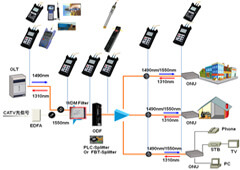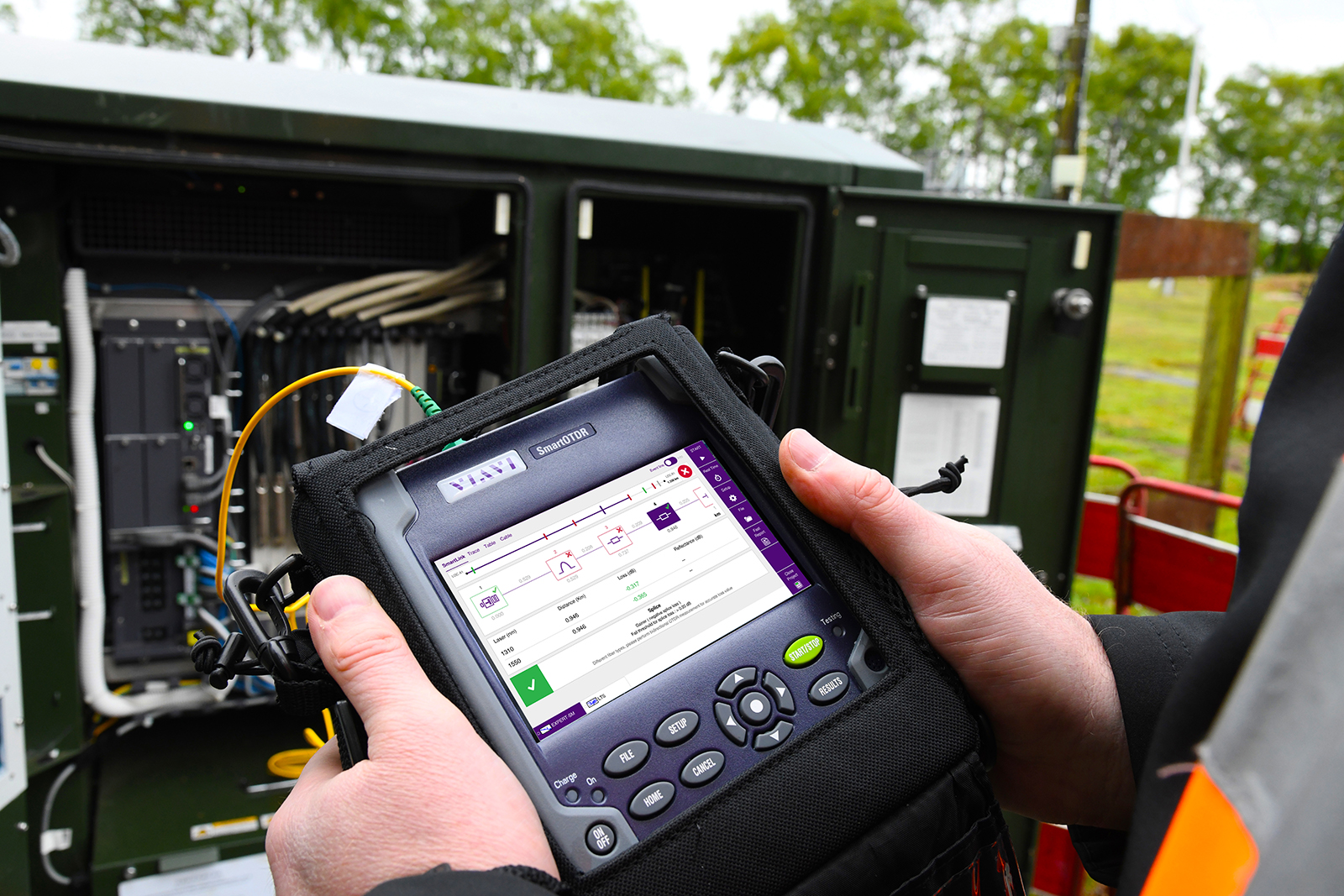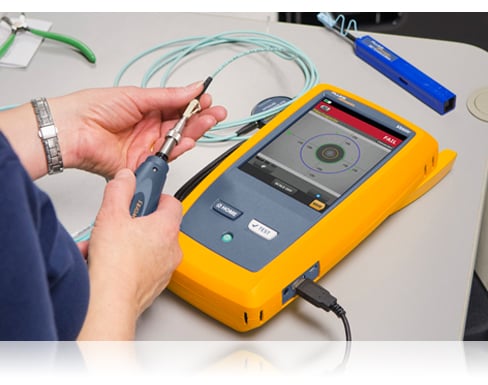Common pitfalls to avoid when using fibre testing equipment
Common pitfalls to avoid when using fibre testing equipment
Blog Article
Exploring Advanced Techniques in Fiber Measurement and Their Industry Impact
In today's fabric sector, exact fiber dimension is essential for optimizing manufacturing procedures and conference sustainability objectives. With the surge of cutting-edge imaging and logical tools, you can acquire deeper insights into fiber structure and make-up. This shift not only enhances efficiency yet additionally aligns with market requirements. As these sophisticated methods develop, you might question exactly how they can further transform producing techniques and effect the future of fabrics.
The Relevance of Accurate Fiber Measurement in Textile Production

Cutting-edge Imaging Technologies for Fiber Evaluation
When it involves fiber analysis, innovative imaging technologies are game changers. High-resolution microscopy strategies and spectroscopic evaluation approaches give you with detailed understandings right into fiber framework and structure. These developments not just boost precision however also streamline your dimension processes.
High-Resolution Microscopy Techniques
High-resolution microscopy techniques have actually changed fiber analysis, enabling researchers to picture fibers at extraordinary degrees of detail. With methods like scanning electron microscopy (SEM) and transmission electron microscopy (TEM), you can observe fiber morphology, surface area functions, and cross-sections with amazing quality. These strategies enable you to compare different fiber kinds and analyze their architectural stability. You'll find that high-resolution imaging aids determine defects, inclusions, and various other important attributes that can influence product performance. Improvements in digital imaging software application have boosted picture handling, making it simpler to assess and interpret information. By taking on these cutting-edge techniques, you can drive greater accuracy in fiber dimension and add to developments in numerous industries, from fabrics to compounds.
Spectroscopic Evaluation Methods
Spectroscopic evaluation approaches have become effective tools for fiber characterization, providing insights that enhance high-resolution microscopy. You can utilize techniques like infrared (IR) spectroscopy, which assists identify the chemical structure of fibers by gauging molecular vibrations. Raman spectroscopy provides an additional layer of detail, permitting you to examine molecular frameworks via scattering of single light. These techniques not just boost your understanding of fiber properties but likewise allow the detection of pollutants and architectural variants. By incorporating spectroscopic methods with conventional microscopy, you gain a more substantial sight of fibers' physical and chemical characteristics, enhancing your research accuracy. Ultimately, these advancements can significantly influence product option and quality control in various industries.
Advanced Analytical Tools and Their Applications
As you discover the domain of fiber dimension, you'll discover that innovative logical devices play an important function in enhancing accuracy and efficiency. Strategies like high-performance fluid chromatography (HPLC) and gas chromatography (GC) permit you to examine fiber make-up with excellent accuracy. These devices allow you to recognize certain elements and pollutants, guaranteeing quality assurance in your products.Additionally, making use of scanning electron microscopy (SEM) offers you an in-depth view of fiber structure, aiding you recognize how different therapies impact performance. Modern software additionally streamlines data evaluation, making it much easier to translate complex outcomes and work together throughout groups.

Impact of Fiber Measurement on Manufacturing Effectiveness
While specific fiber measurement may appear like a small information, it considerably impacts manufacturing effectiveness in the fabric industry. When you buy accurate fiber measurement methods, you can maximize resources usage and lessen waste. This leads to better source appropriation, allowing you to produce top notch textiles without excessive using resources.By understanding fiber attributes, you can tailor manufacturing procedures to specific products, improving your operations and reducing downtime. Understanding the specific tensile toughness of fibers allows you readjust equipment setups for optimum performance. This not just quickens manufacturing yet also guarantees constant product quality.Moreover, accurate fiber measurement helps you identify problems early in the manufacturing line, protecting against pricey reworks and hold-ups (fiber measurement). Overall, carrying out advanced fiber measurement strategies enhances procedures, improves effectiveness, and inevitably raises productivity. In today's affordable market, every information counts, and accurate fiber measurement is a game-changer
Sustainability Factors To Consider in Fiber Assessment Techniques
When you analyze fiber, it's vital to ponder lasting methods that can minimize environmental impact. Utilizing green dimension methods and minimizing waste in your assessments can greatly enhance your total sustainability. In addition, integrating lifecycle evaluation into your techniques can give a more clear photo of your fiber's ecological footprint.
Eco-Friendly Measurement Methods
Considering the expanding demand for sustainability in numerous markets, taking on environment-friendly dimension techniques for fiber assessment has become visit this web-site necessary. You can start by making use of non-toxic solvents and biodegradable products in your testing processes. These choices not only lower environmental influence however additionally enhance security for your group. Carrying out electronic measurement strategies can even more decrease waste, as they frequently call for fewer physical examples and sources. Furthermore, leveraging cutting-edge technologies like near-infrared spectroscopy can produce exact results without damaging chemicals. By picking these greener methods, you add to an extra sustainable future while maintaining high criteria in fiber high quality. Eventually, incorporating eco-friendly methods right into your fiber analysis not only lines up with customer worths yet also increases your brand's track record.
Reducing Waste in Assessment
To efficiently minimize waste in fiber analysis, you can apply strategies that enhance your screening procedures and decrease source consumption. Start by optimizing sample dimensions; utilizing smaller sized examples can produce precise results while saving products. Next, purchase multifunctional equipment that permits different tests without needing several devices, lowering power and source usage. You need to additionally take into consideration taking on electronic devices for data collection and evaluation, which can reduce paper waste and enhance effectiveness. On a regular basis educating your team on sustainable techniques assures every person's aboard with waste reduction goals. Ultimately, teaming up with distributors that focus on sustainability can even more enhance your initiatives, enabling you to evaluate fibers while preserving a commitment to ecological duty.
Lifecycle Evaluation Integration
Incorporating lifecycle analysis (LCA) into fiber assessment methods can greatly improve sustainability initiatives. By analyzing the ecological impacts of fibers from production to disposal, you can identify areas for improvement. This technique aids you comprehend source consumption, energy usage, and waste generation throughout the fiber's life.When you incorporate LCA, you're not just determining fiber characteristics; you're additionally thinking about the eco-friendly impact. This holistic view allows you to make enlightened decisions that focus on sustainability. You might choose fibers that need less sources or have a reduced carbon influence. Eventually, LCA equips you to maximize procedures, reduce waste, and promote eco-friendly selections in fiber production, straightening your exercise with worldwide sustainability objectives.
Market Standards and Regulations Shaping Fiber Measurement
As the demand for top notch fiber items expands, understanding the sector requirements and guidelines that control fiber dimension comes to be essential. These guidelines ensure consistency, accuracy, and safety in the measurement process, which ultimately affects product quality. Organizations like ASTM International and ISO set forth standards that manufacturers must abide by, covering various elements such as fiber identification, strength screening, and dampness material analysis.

Future Fads in Fiber Measurement and Textile Manufacturing
Exactly how will developments in technology improve fiber measurement and fabric production? You'll see a shift towards automation and real-time information analysis, boosting accuracy and effectiveness. Smart sensors will monitor fiber residential properties constantly, permitting instant changes in production. This suggests you can expect better fabrics with less waste.Moreover, AI and equipment knowing will certainly forecast trends in customer choices, allowing makers to adapt swiftly. fibre testing equipment. By incorporating blockchain modern technology, you'll have much better traceability of products, ensuring sustainability and honest sourcing.Virtual truth and boosted reality will play a duty too, using immersive training experiences for employees on fiber handling and manufacturing processes.As you embrace these changes, the textile sector will certainly transform into a more responsive, sustainable, and ingenious field, setting brand-new requirements for high quality and efficiency. The future of fiber dimension and fabric production is brilliant, and it's time to jump on board
Regularly Asked Inquiries
What Are the Most Common Fiber Types Measured in the Industry?
In the industry, you'll commonly run into all-natural fibers like cotton and woollen, along with artificial choices such as polyester and nylon. Each type has special homes, influencing their dimension and application in different products.
Exactly How Do Fiber Dimensions Affect Consumer Item Top Quality?
Fiber dimensions directly influence consumer item quality by guaranteeing consistency, resilience, and performance. When you recognize these metrics, you can make enlightened options, leading to improved contentment and better total experiences with the items you use.
What Training Is Required for Fiber Measurement Technicians?
To become a fiber measurement professional, you'll need specific training in textile science, measurement strategies, and devices procedure. Hands-on experience and certifications can boost your skills, making you skilled in accurate fiber evaluation and home quality control.
Are There Any Kind Of Certifications for Fiber Measurement Professionals?
Yes, there are qualifications for fiber dimension specialists. You can go after options like the Licensed Fiber Optics Technician (CFOT) or different industry-specific qualifications check that boost your proficiency and reputation in fiber dimension and screening.
How Can Tiny Services Carry Out Fiber Dimension Techniques Effectively?
You can implement fiber measurement methods successfully by purchasing cost effective devices, training your team, and developing clear methods. Team up with market experts and continually refine your processes to enhance precision and effectiveness over time.
Report this page